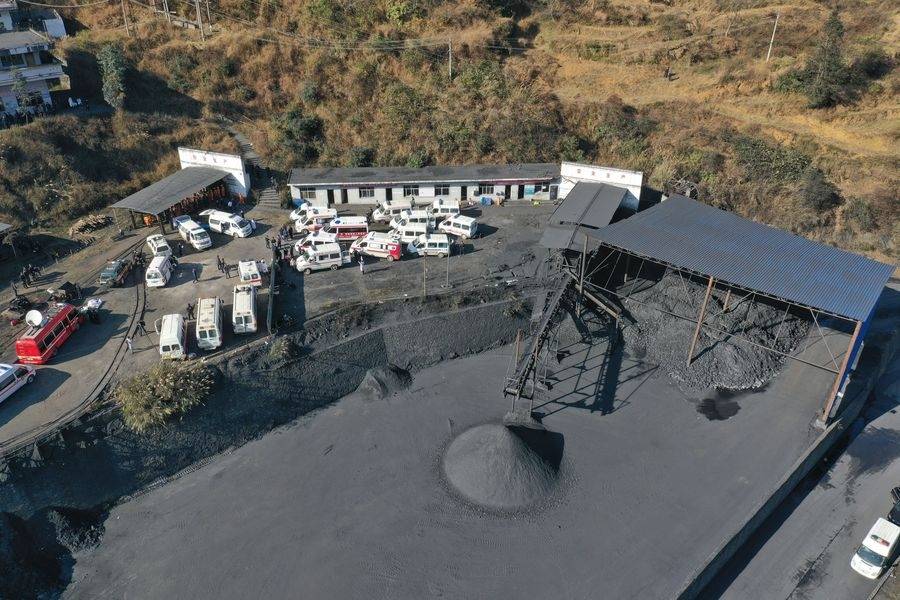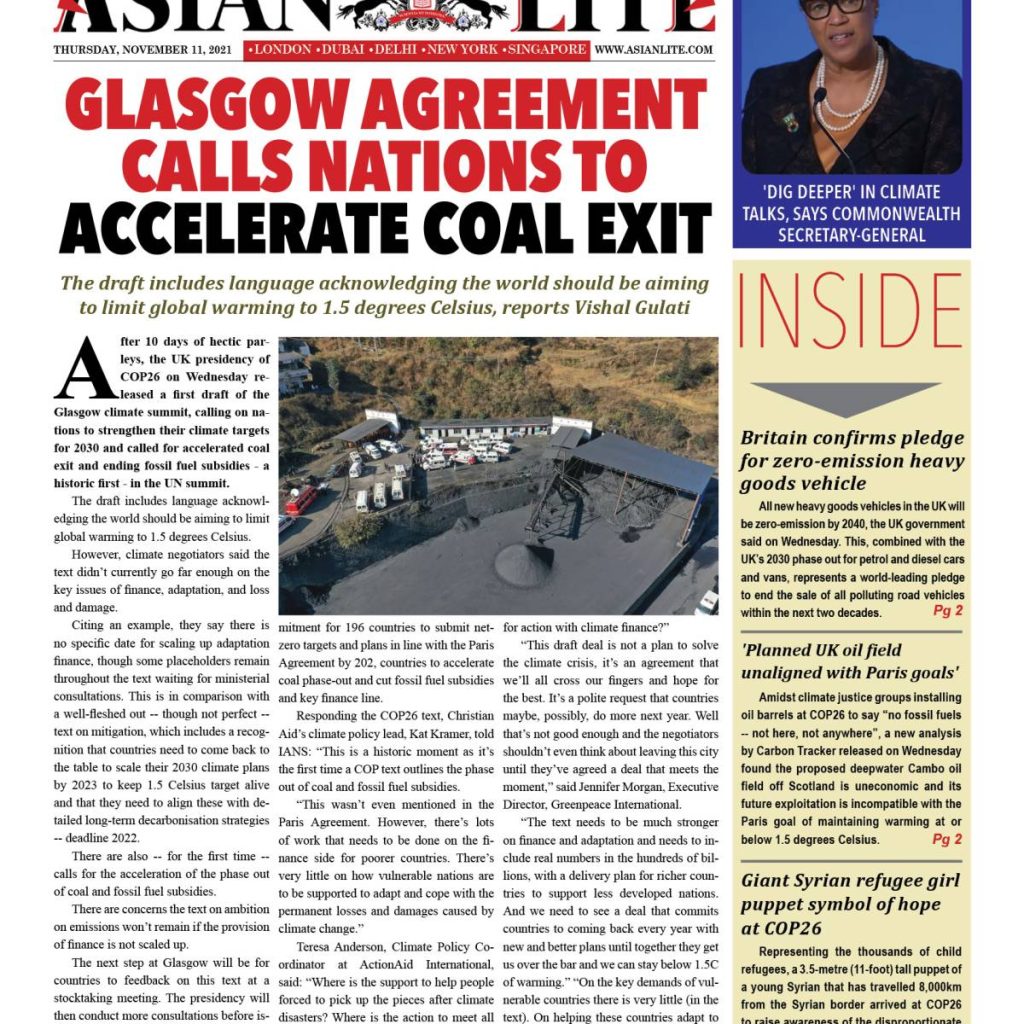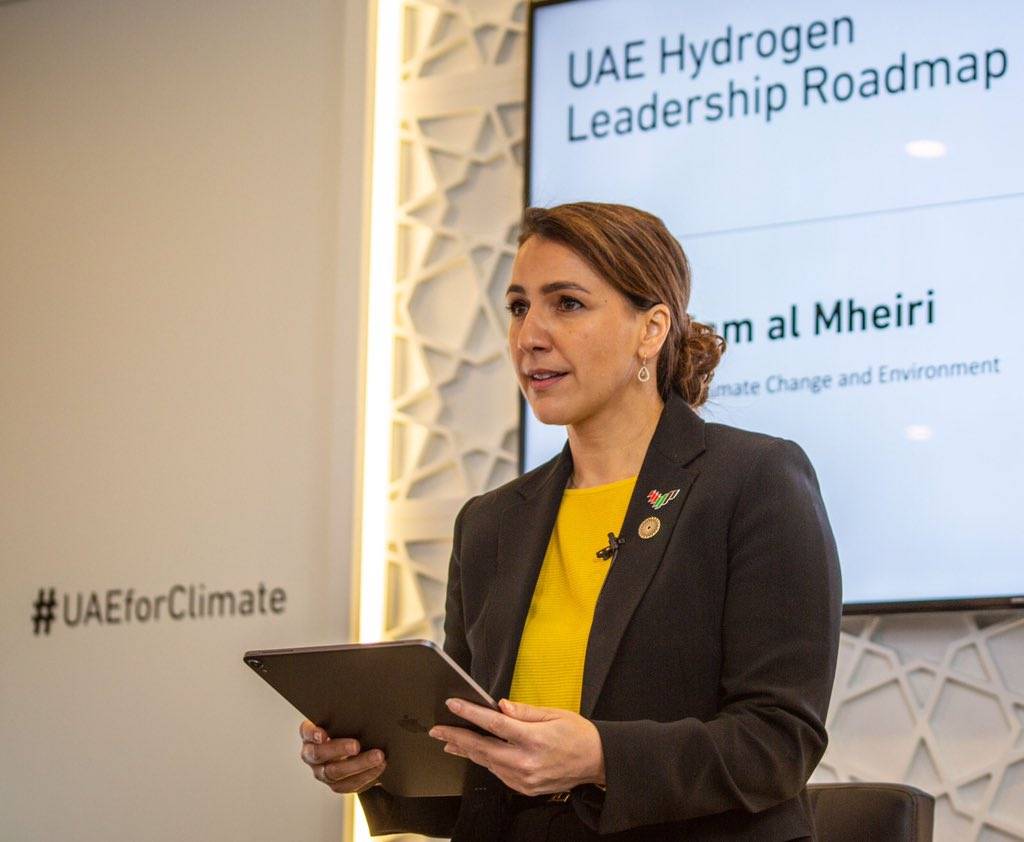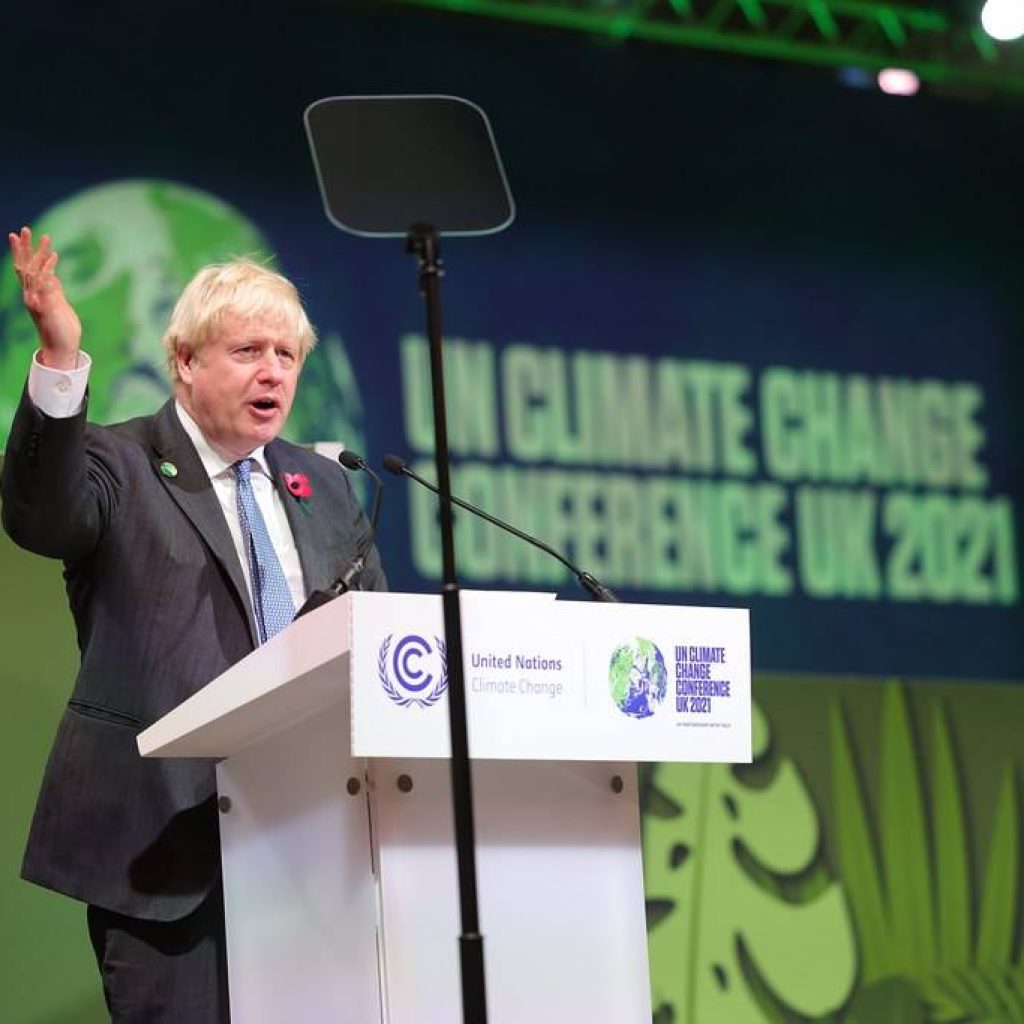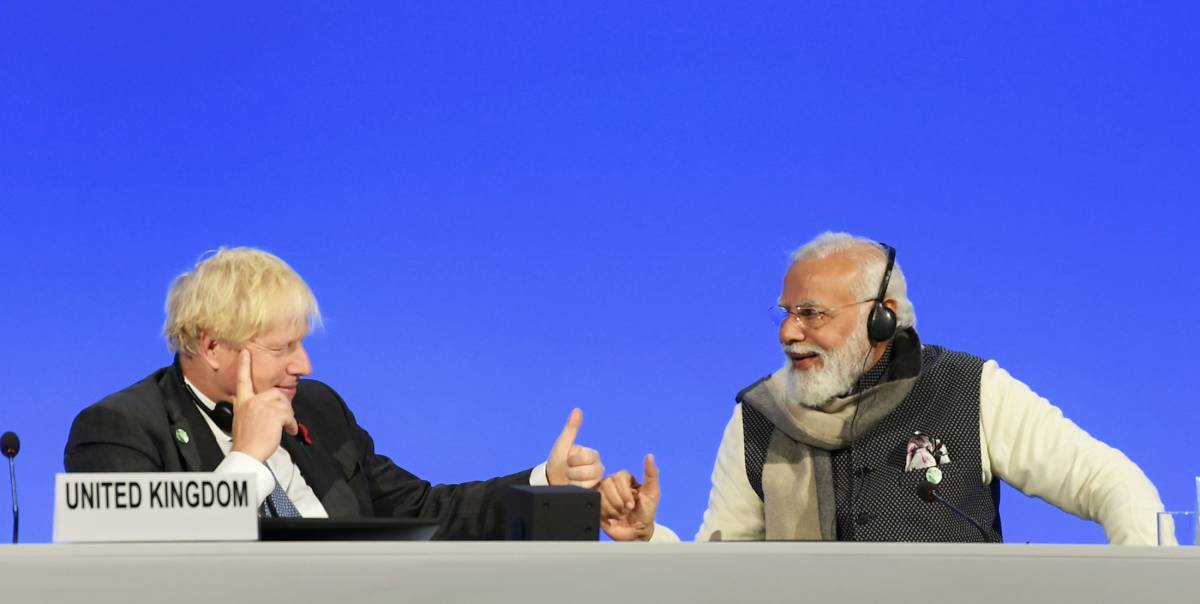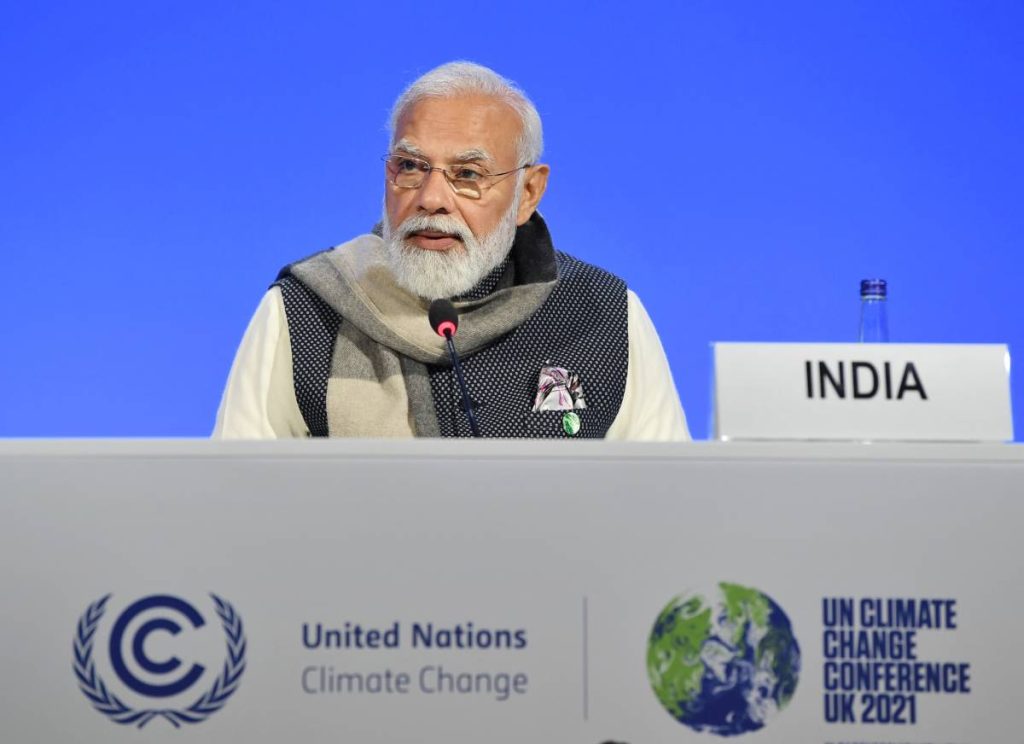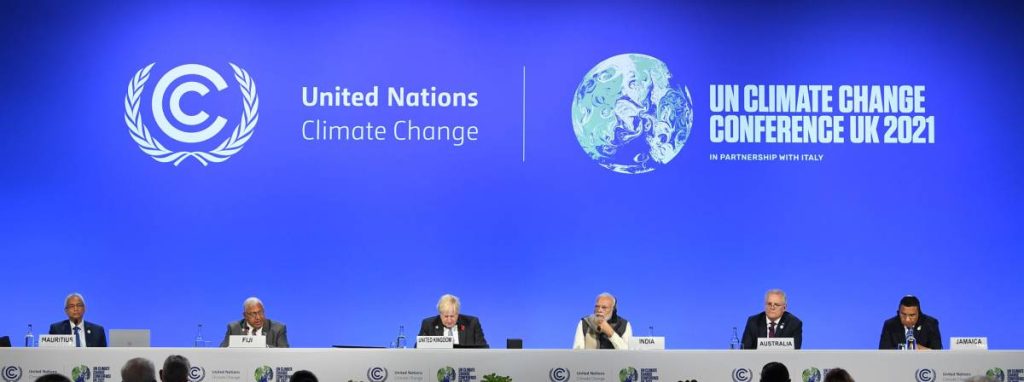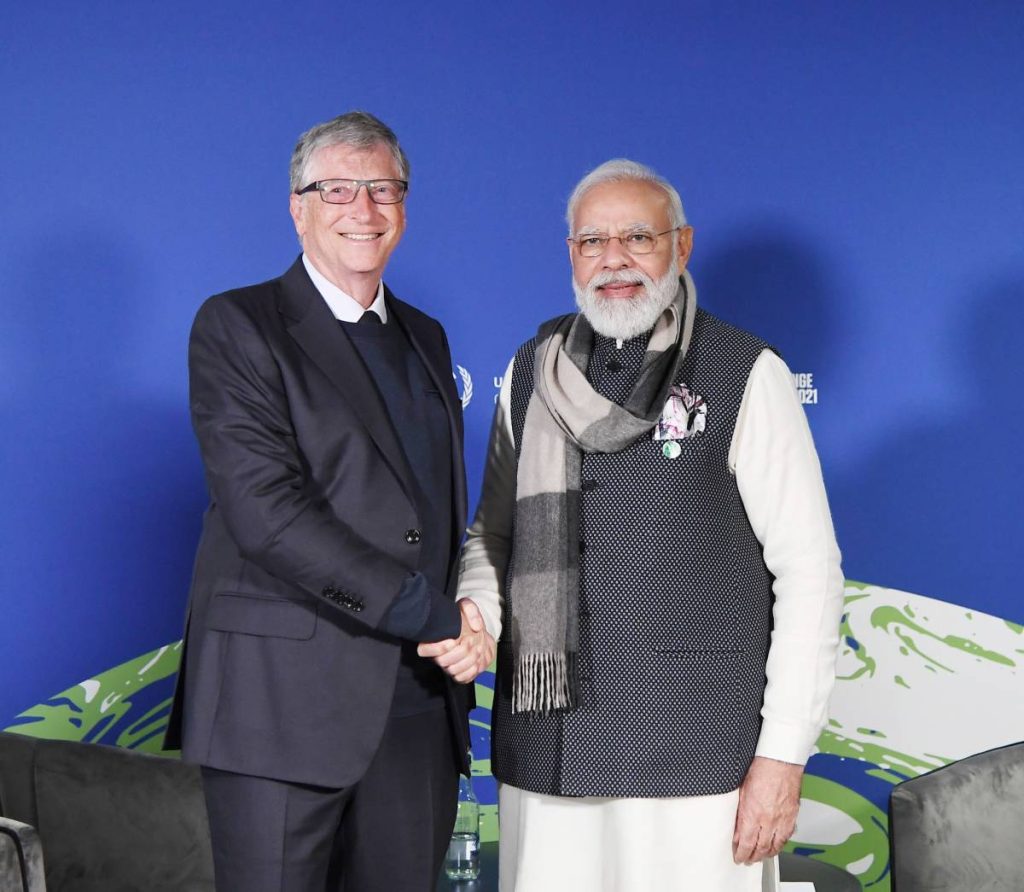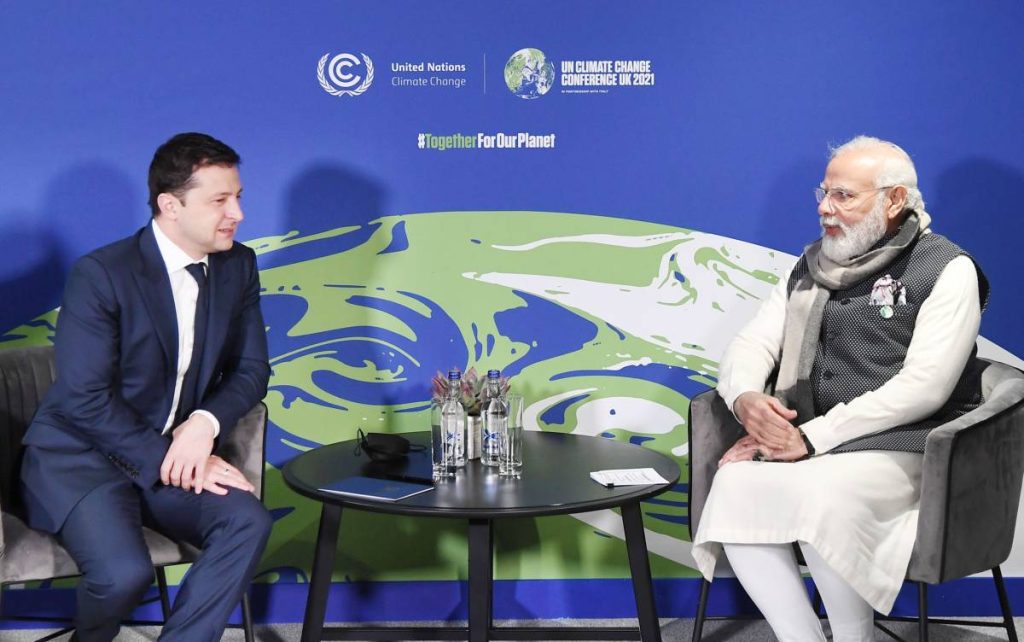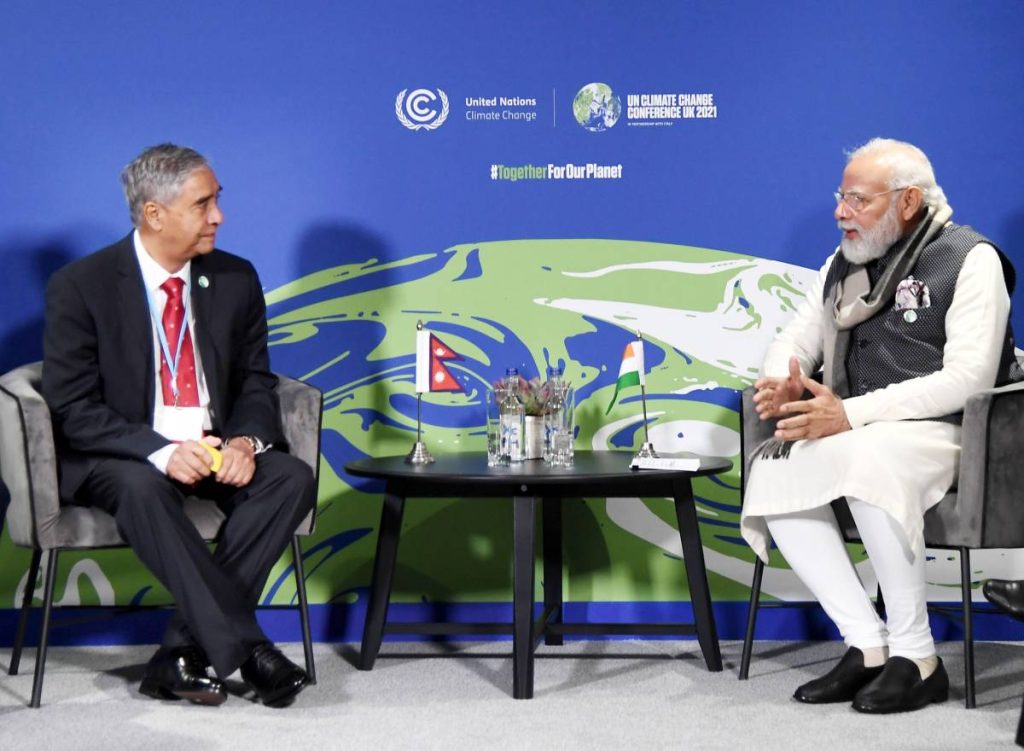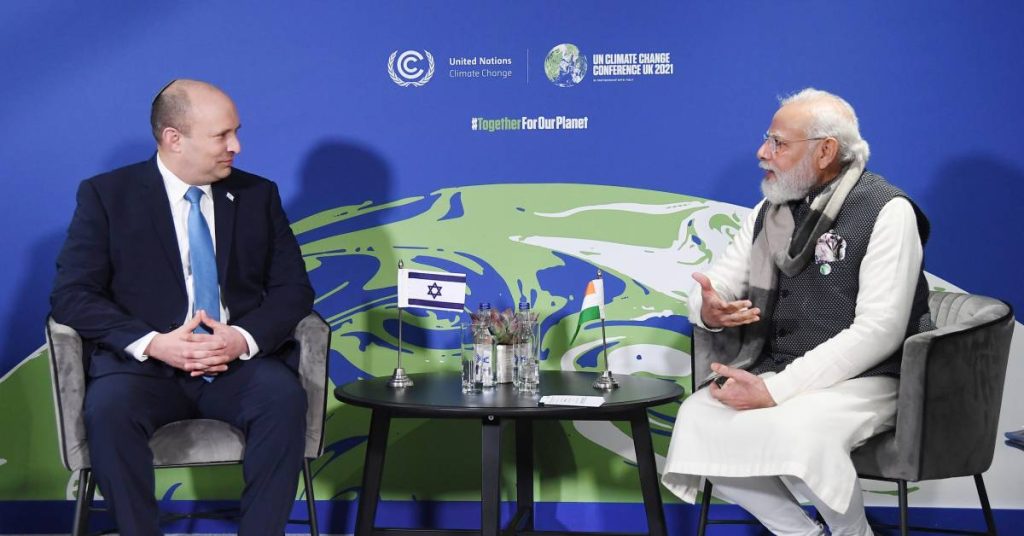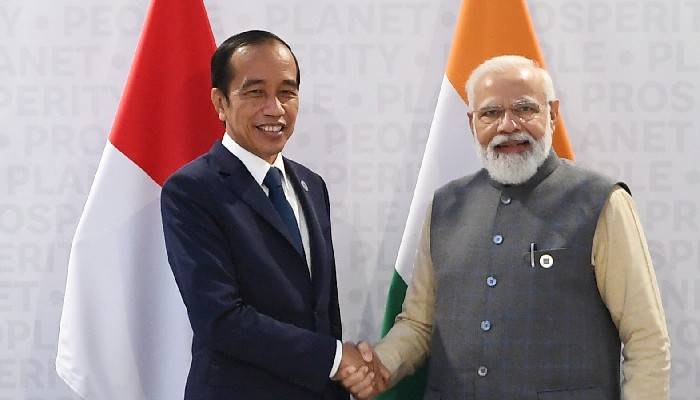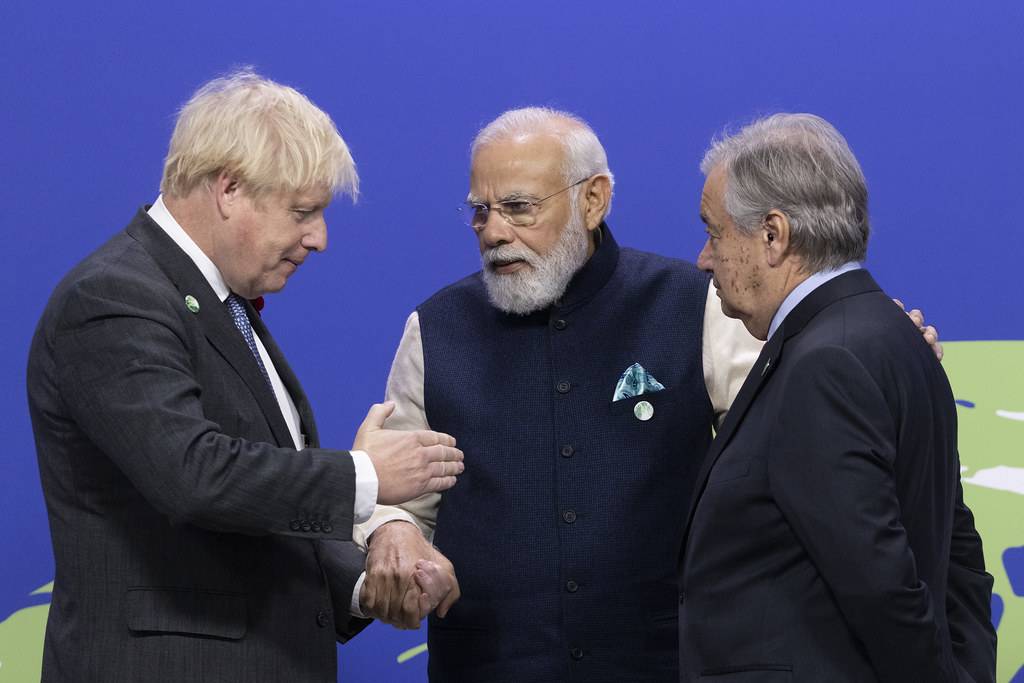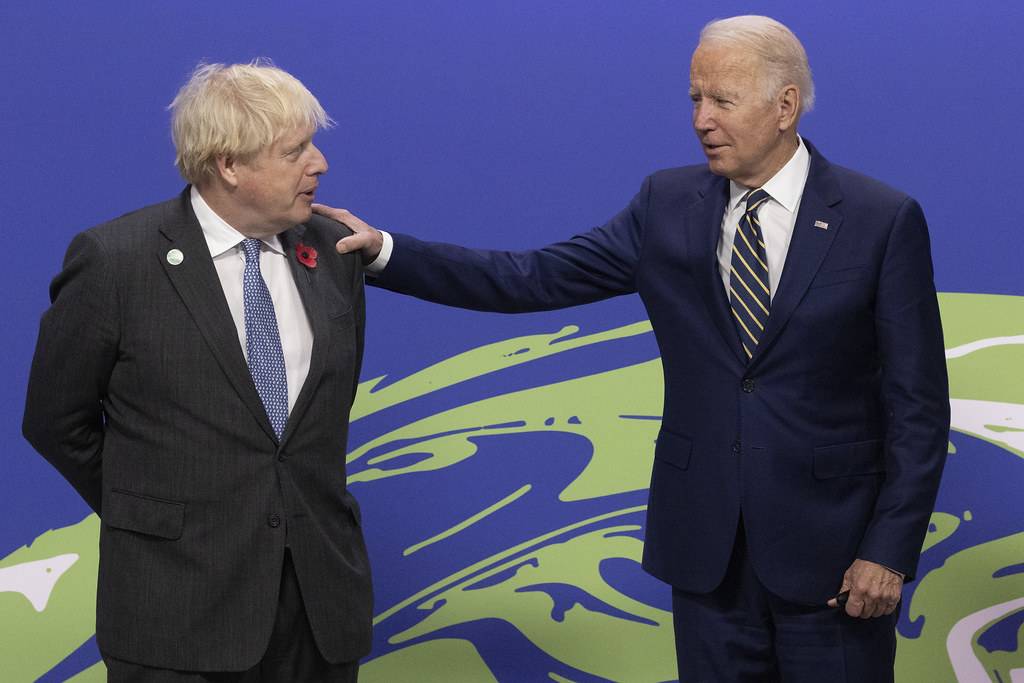Experts believe India’s domestic target of 500GW of renewable energy by 2030 would be more than sufficient to meet the country’s growing electricity needs, reports Vishal Gulati
India surprised the world at the just concluded two-week 26th UN Climate Change Conference (COP26) with the UK as President in Glasgow by announcing the most ambitious targets by a developing nation to combat climate change.
They included installing non-fossil fuel electricity capacity of 500 GW by 2030; sourcing 50 per cent of energy requirement from renewables by 2030; reducing 1 billion tonnes of projected emissions from now till 2030; achieving carbon intensity reduction of 45 per cent over 2005 levels by 2030; and achieving net zero by 2070.
But as the climate negotiations of the Conference of Parties to the UN Framework Convention on Climate Change (UNFCCC) were over and the gap to 1.5 degrees Celsius narrowed with the adoption of the Glasgow Climate Pact by 197 countries, India was blamed for the last-minute insistence on changing the complete “phase out” of coal to “phase down”.
Now the question is: What does the future of coal look like for India?
India alone is home to seven per cent (21GW) of the global coal project pipeline, which is 56 per cent of South Asia’s total, with the country moving slowly away from coal at a national level. Besides, considerable progress is being made at the state level, says a new report by think tank E3G.
However, experts believe India’s domestic target of 500GW of renewable energy by 2030 would be more than sufficient to meet the country’s growing electricity needs.
An analysis by Ember and Climate Risk Horizons in the run-up to COP26 estimates that even if India’s electricity demand grows at five per cent per year, India’s existing coal capacity along with 450GW of renewable capacity would be sufficient to meet the 2030 demands.
It says 27 GW of pre-permit and permitted new coal power plant proposals are now superfluous to requirements and will likely end up as “zombie” plants — assets that will be neither dead nor alive.
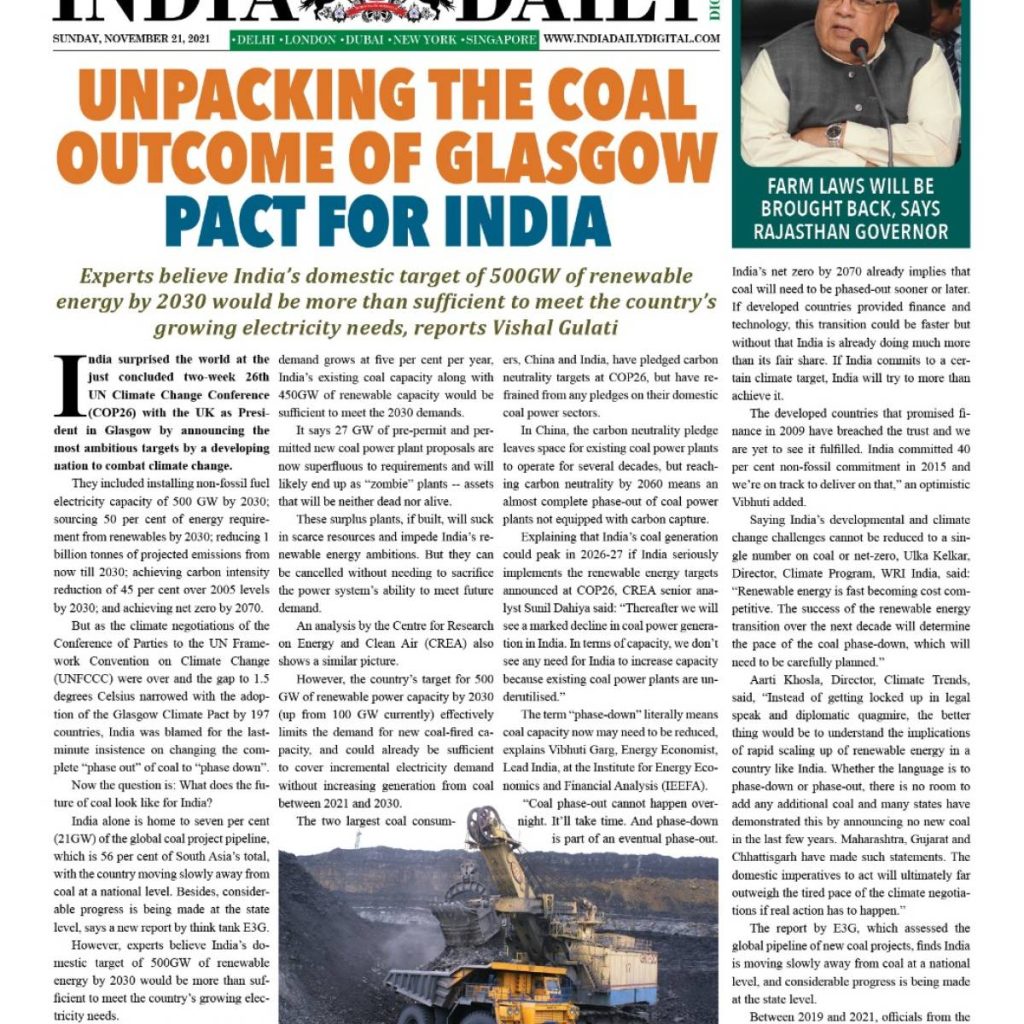
These surplus plants, if built, will suck in scarce resources and impede India’s renewable energy ambitions. But they can be cancelled without needing to sacrifice the power system’s ability to meet future demand.
An analysis by the Centre for Research on Energy and Clean Air (CREA) also shows a similar picture.
However, the country’s target for 500 GW of renewable power capacity by 2030 (up from 100 GW currently) effectively limits the demand for new coal-fired capacity, and could already be sufficient to cover incremental electricity demand without increasing generation from coal between 2021 and 2030.
The two largest coal consumers, China and India, have pledged carbon neutrality targets at COP26, but have refrained from any pledges on their domestic coal power sectors.
In China, the carbon neutrality pledge leaves space for existing coal power plants to operate for several decades, but reaching carbon neutrality by 2060 means an almost complete phase-out of coal power plants not equipped with carbon capture.
Explaining that India’s coal generation could peak in 2026-27 if India seriously implements the renewable energy targets announced at COP26, CREA senior analyst Sunil Dahiya said: “Thereafter we will see a marked decline in coal power generation in India. In terms of capacity, we don’t see any need for India to increase capacity because existing coal power plants are underutilised.”
The term “phase-down” literally means coal capacity now may need to be reduced, explains Vibhuti Garg, Energy Economist, Lead India, at the Institute for Energy Economics and Financial Analysis (IEEFA).
“Coal phase-out cannot happen overnight. It’ll take time. And phase-down is part of an eventual phase-out. India’s net zero by 2070 already implies that coal will need to be phased-out sooner or later. If developed countries provided finance and technology, this transition could be faster but without that India is already doing much more than its fair share. If India commits to a certain climate target, India will try to more than achieve it. The developed countries that promised finance in 2009 have breached the trust and we are yet to see it fulfilled. India committed 40 per cent non-fossil commitment in 2015 and we’re on track to deliver on that,” an optimistic Vibhuti added.
Saying India’s developmental and climate change challenges cannot be reduced to a single number on coal or net-zero, Ulka Kelkar, Director, Climate Program, WRI India, said: “Renewable energy is fast becoming cost competitive. The success of the renewable energy transition over the next decade will determine the pace of the coal phase-down, which will need to be carefully planned.”
Aarti Khosla, Director, Climate Trends, said, “Instead of getting locked up in legal speak and diplomatic quagmire, the better thing would be to understand the implications of rapid scaling up of renewable energy in a country like India. Whether the language is to phase-down or phase-out, there is no room to add any additional coal and many states have demonstrated this by announcing no new coal in the last few years. Maharashtra, Gujarat and Chhattisgarh have made such statements. The domestic imperatives to act will ultimately far outweigh the tired pace of the climate negotiations if real action has to happen.”
The report by E3G, which assessed the global pipeline of new coal projects, finds India is moving slowly away from coal at a national level, and considerable progress is being made at the state level.
Between 2019 and 2021, officials from the states of Gujarat, Chhattisgarh, Maharashtra and Karnataka announced their intention to not build new coal power plants.
According to a 2019 study, many more states have the potential to move away from new coal power due to a combination of socio-economic and environmental factors, particularly the rapidly increasing cost competitiveness of new renewables.
India’s pre-construction pipeline of 21GW is the second largest in the world.
India is currently constructing 34GW of new coal capacity. This is on top of India’s considerable existing operating fleet of 233GW (11.3 per cent of the global total).
Yet since 2015, India has seen over 326GW of projects cancelled, including more than 250GW of shelved capacity. This means almost 7GW has been scrapped for every 1GW that has gone into operation.
Meanwhile, renewable tariffs in India are some of the lowest in the world, reaching a record low of Rs 1.99/kWh ($ 0.026/kWh) in December 2020.
ALSO READ-Glasgow agreement calls nations to accelerate coal exit


